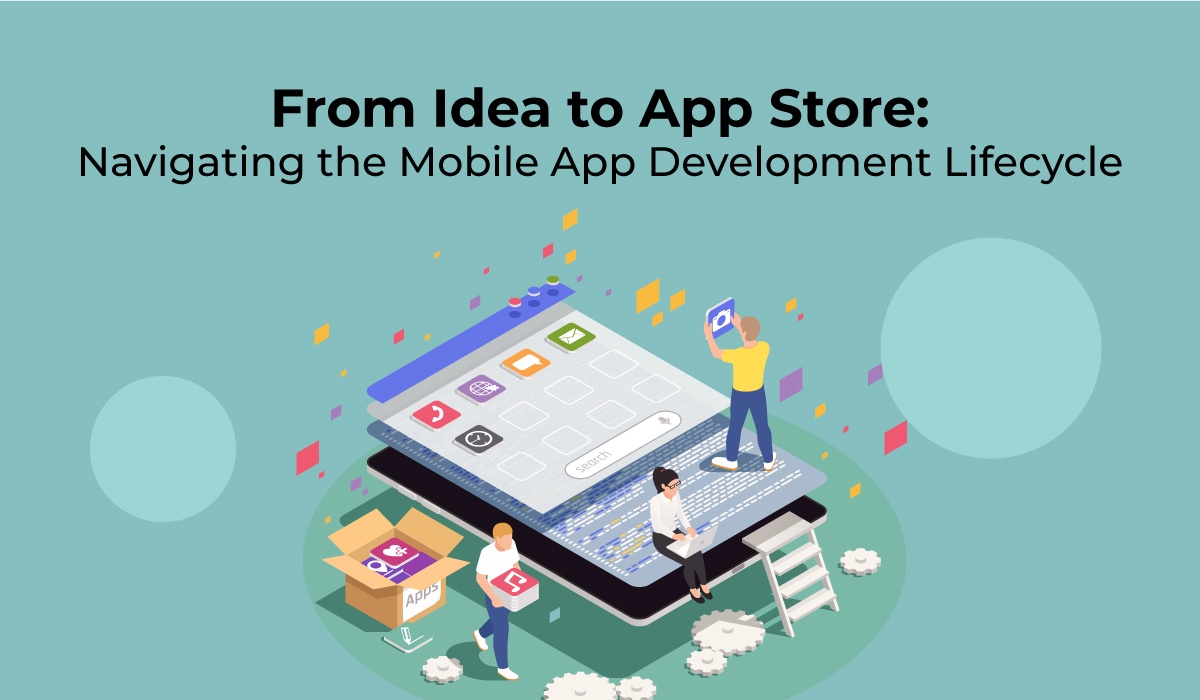In the digital age, mobile apps have become an integral part of our daily lives, offering convenience, entertainment, and essential services at our fingertips. Behind every successful app lies a meticulously planned and executed development process. From the initial spark of an idea to the exciting launch on the app store, navigating the mobile app development lifecycle requires careful consideration, collaboration, and expertise. In this blog post, we'll take you through the stages of the mobile app development lifecycle, providing insights into each phase and highlighting key considerations.
1. Conceptualization and Ideation:
The journey begins with an idea—a solution to a problem, an innovative concept, or a unique service. During this phase, brainstorming sessions, market research, and competitor analysis help refine your concept. Define your target audience, identify their pain points, and outline the features and functionalities that your app will offer. It's essential to establish a clear value proposition that sets your app apart from the competition.
Key Considerations:
- Validate your idea through surveys, user interviews, and feedback.
- Create a rough sketch or wireframe to visualize the app's layout and flow.
- Define your app's core features and prioritize them based on user needs.
2. Market Research and Planning:
Thorough market research is crucial to understanding the competitive landscape and identifying opportunities for your app. Research user preferences, app store trends, and potential monetization strategies. Develop a detailed project plan that outlines milestones, timelines, resources, and budgets. This planning phase sets the foundation for the development process.
Key Considerations:
- Identify potential challenges and risks, and create contingency plans.
- Choose the right platforms (iOS, Android, or both) based on your target audience.
- Decide on the app's monetization model, whether it's paid, freemium, subscription-based, or ad-supported.
3. Design and Prototyping:
In the design phase, your app's visual and user interface (UI) elements take shape. Collaborate with designers to create mockups, prototypes, and interactive wireframes that showcase the app's look and feel. Focus on creating an intuitive and user-friendly interface that enhances the overall user experience (UX). Pay attention to color schemes, typography, and navigation patterns.
Key Considerations:
- Prioritize simplicity and consistency in design to ensure a seamless user journey.
- Incorporate user feedback and iterate on the design to fine-tune the UI/UX.
- Develop a clickable prototype to demonstrate the app's flow and functionality.
4. Development:
The development phase is where the app comes to life through coding and programming. Collaborate with skilled mobile application developers to build the app's backend and frontend components. Depending on your chosen platforms, programming languages, and frameworks, the development process may differ. Regular testing and quality assurance are essential to identify and rectify bugs, glitches, and performance issues.
Key Considerations:
- Choose the appropriate technology stack based on your app's requirements.
- Implement responsive design to ensure the app functions seamlessly on various devices and screen sizes.
- Break down the development process into sprints, with regular milestones for assessment and adjustments.
5. Testing and Quality Assurance:
Testing is a critical phase to ensure that your app functions as intended and delivers a seamless experience to users. Conduct rigorous testing across different devices, operating systems, and scenarios. Identify and fix any bugs, usability issues, or inconsistencies. Perform compatibility testing, security testing, and performance testing to optimize the app's functionality.
Key Considerations:
- Perform manual and automated testing to cover various aspects of the app.
- Utilize beta testing with a limited group of users to gather real-world feedback.
- Implement user acceptance testing to ensure the app meets user expectations.
6. Deployment and Launch:
With testing complete and any necessary refinements made, it's time to prepare for the app's launch. Create compelling app store listings with engaging descriptions, screenshots, and promotional materials. Comply with the app store's guidelines and requirements. Set a launch date, and make sure your app is ready for prime time.
Key Considerations:
- Prepare marketing and promotional strategies to generate buzz around the launch.
- Optimize the app's metadata and keywords for better discoverability on the app store.
- Monitor app store guidelines and policies to ensure compliance and prevent rejections.
7. Post-Launch and Maintenance:
After the app is live on the app store, the journey is far from over. Continuous monitoring, data analysis, and user feedback are essential to gauge the app's performance and user satisfaction. Regularly update the app with new features, improvements, and bug fixes. Pay attention to user reviews and ratings, and engage with users to address their concerns.
Key Considerations:
- Gather and analyze app usage data to identify areas for improvement.
- Release updates and enhancements based on user feedback and emerging trends.
- Maintain a responsive customer support channel to address user inquiries and issues promptly.
Conclusion:
From concept to app store, the mobile app development lifecycle is a carefully orchestrated process that demands collaboration, creativity, and a user-centric approach. Each phase is integral to creating an app that not only meets user needs but also thrives in a competitive digital landscape. By navigating through conceptualization, research, design, development, testing, deployment, and post-launch maintenance, you can bring your app idea to fruition, offering a valuable and engaging experience to users worldwide. Remember, the journey doesn't end at launch; it's an ongoing evolution as you respond to user feedback and embrace innovation to keep your app relevant and successful.


No comments yet